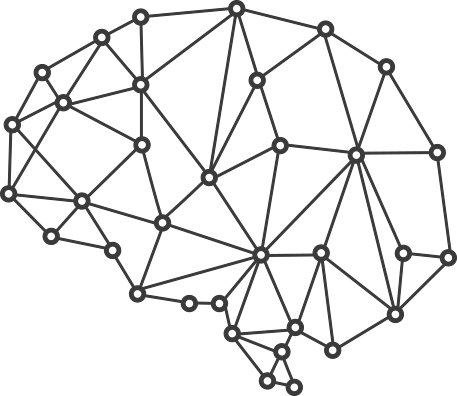ECT is one of the most rapid and effective ways for inducing complete remission of major depression symptoms. Although ECT has been surrounded by stigma, modern ECT is a carefully monitored, safe, and often life-saving medical procedure. Still, it’s not without risks or controversy.
Here’s an in-depth look at what ECT for depression is, how it works, and what you need to consider.
What is ECT?
ECT, or electroconvulsive therapy, is a type of brain stimulation treatment that sends carefully controlled electrical currents through the brain while a patient is under general anesthesia. This causes a brief seizure that is thought to reset brain chemistry patterns that are seen in cases of severe depression and other mental health conditions. It’s conducted in a hospital or outpatient facility by trained medical professionals, and is typically only recommended when other therapies have been unsuccessful or are unsafe.
What Happens During an ECT Treatment Session?
Because patients are given a sedative, ECT patients must not eat or drink after midnight the night before an ECT treatment session. Patients are given a short-acting sedative and a muscle relaxer. Doctors will place cardiac monitoring pads on the patient to monitor cardiac activity during and after the session. Next, doctors will put four electrodes on the patient’s head. Two of them will monitor brain waves, and the remaining two are used to deliver electrical pulses to the patient’s brain to induce a seizure.
Patients do not convulse or feel pain during the procedure because of the sedative and muscle relaxers. After the session, patients are monitored in a recovery room for about a half hour until their blood pressure, pulse, and breathing rates return to baseline levels.
ECT is performed on an outpatient basis, and patients will need someone to drive them home and stay with them after the procedure. Patients are not permitted to drive for 24 hours after a treatment session.
ECT sessions are usually performed three times per week for three to four weeks. For depression, most patients will go through a total of six to twelve treatments before experiencing remission of symptoms.
When Doctors Recommend ECT
Your doctor might recommend ECT if:
- You have severe, treatment-resistant depression
- You have suicidal ideation or have made suicide attempts
- You’re experiencing psychotic depression or catatonia
- You’ve had past success with ECT
ECT may also be recommended for pregnant women, especially if the benefits outweigh the risks or other treatments pose risks to the fetus.
Why Are People Concerned About ECT?
Despite scientific-backed research and modern advances, ECT still faces skepticism and fear. This could largely be due to its portal in film in media, such as 1975’s One Flew Over the Cuckoo’s Nest, which shows scenes of convulsions during treatment. On the contrary, ECT is actually a humane treatment that’s painless and conducted under strict medical supervision.
However, valid concerns remain as ECT can contribute to memory loss, carry sedation risks, and requires a significant time commitment.
Memory Loss and Cognitive Decline
Perhaps one of the most known risks of ECT is memory loss. Most commonly, patients experience anterograde amnesia (trouble forming new memories after treatment) and/or retrograde amnesia (difficulty remembering things from days or weeks before treatment).
In rare cases, memory gaps can last even longer. A recent study found that increases in hippocampal volume, a brain area responsible for memory, after ECT were linked with worse cognitive outcomes in some patients.
Another study found that verbal fluency and recall declined shortly after ECT, but improved at 3- and 6-month follow-ups. This suggests that while cognitive impairment is possible, it may only be temporary. That said, these risks must be weighed carefully, especially for younger individuals whose cognitive functioning is more intact.
Sedation and Procedure Risks
Like any procedure that requires general anesthesia, ECT carries some risks, including for patients with cardiovascular or respiratory issues. Side effects may include:
- Headaches
- Nausea
- Confusion upon waking up
- Stroke, heart attack or death, in rare cases
In fact, researchers found that older adults and those with multiple health conditions had a slightly increased risk of adverse outcomes. Because of this, your doctor will conduct a thorough evaluation that includes an electrocardiogram (EKG) to make sure ECT is safe.
Time Commitment
Since ECT typically occurs three times per week and requires 30 minutes of monitoring after each session, this type of treatment demands a significant time commitment that can interfere with other life activities. Keep in mind that patients are advised not to drive in the 24 hours following ECT. With multiple weekly sessions, this can make it difficult to make it to work, especially for those who have long commutes.
Additionally, maintenance sessions may be needed to prevent relapse, which is common in those undergoing ECT treatment. A meta-analysis showed that 51% of patients relapsed within 12 months of completing ECT treatment, with most relapsing within the first six months. While this can be the case with any depression treatment, follow-up sessions can be difficult to keep up with due to the nature of this therapy.
Is ECT the Only Option for Treatment-Resistant Depression?
While ECT may work for some people, it doesn’t work for everyone. However, not all hope is lost as there are several other treatments that may work in treatment-resistant cases.
Alternative Brain Stimulation Therapies
If medication, therapy, and ECT have not worked for you or you can’t tolerate the side effects, there are other brain stimulation therapies to consider:
- Vagus Nerve Stimulation (VNS) involves implanting a device in the chest that stimulates the vagus nerve to help regulate mood.
- Deep Brain Stimulation (DBS) requires surgically implanted devices that provide ongoing electrical stimulation.
- Transcranial Magnetic Stimulation (TMS) is a non-invasive treatment that uses magnetic pulses to stimulate different areas of the brain responsible for symptoms.
TMS is the least invasive and is better tolerated compared to other brain stimulation therapies, making it a more favorable treatment option.
ECT vs. TMS Therapy
Since both ECT and TMS can be effective for cases of treatment-resistant depression, people may wonder how the two treatments compare. Consider the following:
| Feature | ECT | TMS |
| Invasiveness | Requires anesthesia and induces seizures | Non-invasive, no sedation |
| Side Effects | Memory loss, confusion, headache | Mild headache, scalp discomfort |
| Effectiveness | Often more effective for severe depression | Effective for moderate treatment-resistant depression |
| Time Commitment | 3x/week + recovery time | 5x/week, ~20-40 minutes per session |
| Long-Term Effects | High risk of memory loss | Lower risk of cognitive impairment |
Research has also found the following:
- In a study of over 5,800 patients, those who underwent TMS had fewer depressive episodes, suicide attempts, and side effects compared to ECT, even years after treatment.
- Neuroimaging shows that ECT produces more structural changes in brain volume, especially in areas related to emotion and memory, compared to TMS which provides similar symptom relief without structural brain changes.
- Amongst patients who’ve received both ECT and TMS, ECT is more effective in treating depression.
While ECT may be slightly superior to TMS for the overall improvement of depression, the additional benefits conferred from ECT compared to TMS may not be worth the side effects that come with ECT.
Find Support for Treatment-Resistant Depression
If you or a loved one is suffering from severe depression, there are options. The helpful technicians at Pulse TMS are standing by to answer your questions about effective deep brain stimulation techniques for mental health disorders. Please reach out to us today to discuss your treatment options.
Let's Discuss Treatment Options.



